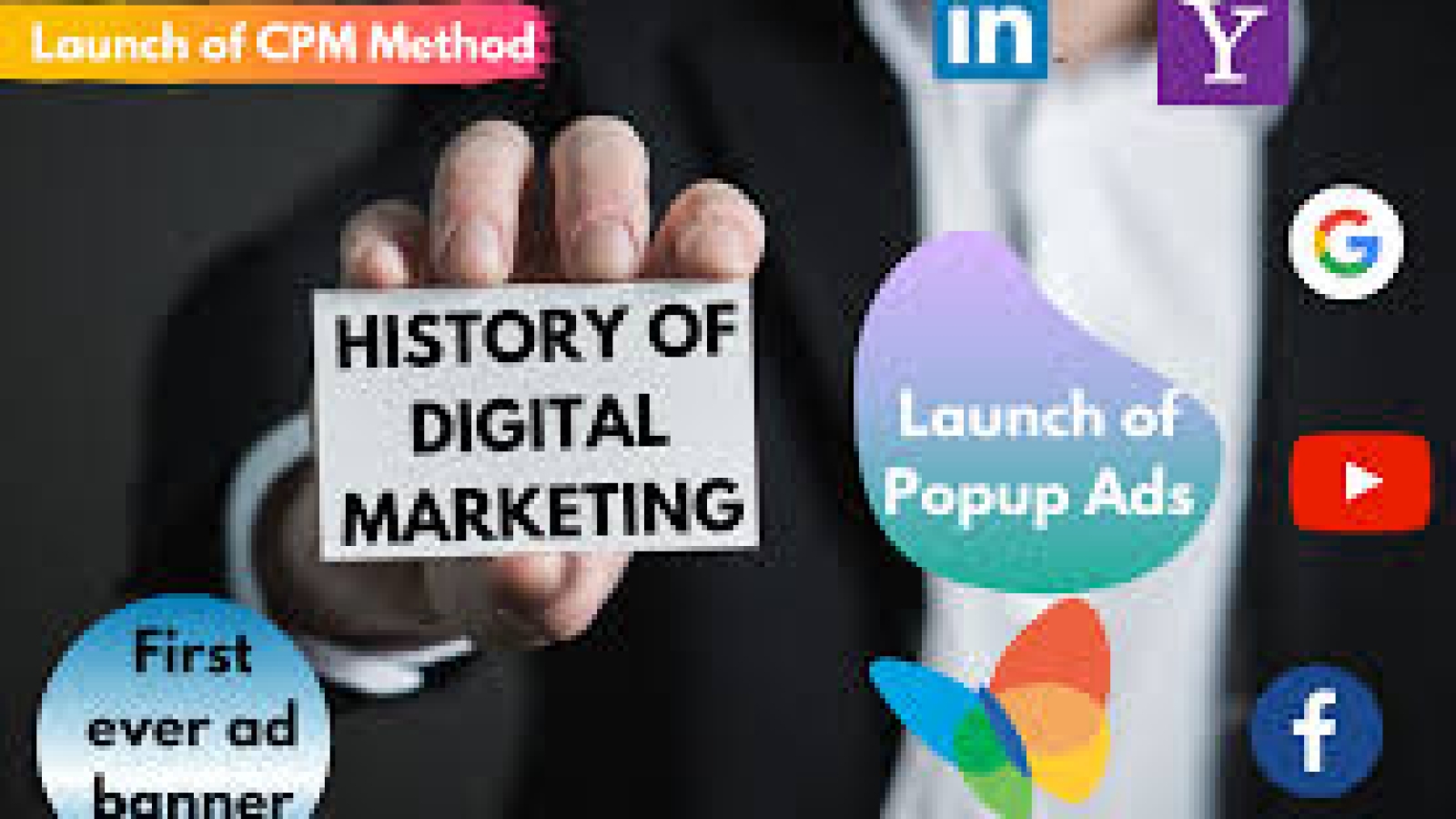The term Digital Marketing was first used in the 1990s. The digital age took off with the coming of the internet and the development of the Web 1.0 platform. The Web 1.0 platform allowed users to find the information they wanted but did not allow them to share this information over the web. Up until then, marketers worldwide were still unsure of the digital platform. They were not sure if their strategies would work since the internet had not yet seen widespread deployment.
In 1993, the first clickable banner went live, after which HotWired purchased a few banner ads for their advertising. This marked the beginning of the transition to the digital era of marketing. Because of this gradual shift, the year 1994 saw new technologies enter the digital marketplace. The very same year, Yahoo was launched.
Also known as “Jerry’s Guide to the World Wide Web” after its founder Jerry Yang, Yahoo received close to 1 million hits within the first year. This prompted wholesale changes in the digital marketing space, with companies optimizing their websites to pull in higher search engine rankings. 1996 saw the launch of a couple of more search engines and tools like
1998 saw the birth of Google. Microsoft launched the MSN search engine and Yahoo brought to the market Yahoo web search. Two years later, the internet bubble burst and all the smaller search engines were either left behind or wiped out leaving more space for the giants in the business. The digital marketing world saw its first steep surge in 2006 when search engine traffic was reported to have grown to about 6.4 billion in a single month. Not one to get left behind, Microsoft put MSN on the backburner and launched Live Search to compete with Google and Yahoo.
Then came Web 2.0, where people became more active participants rather than remain passive users. Web 2.0 allowed users to interact with other users and businesses. Labels like ‘super information highway’ began to be applied to the internet. As a result, information flow volumes –including channels utilized by digital marketers- increased manifold, and by 2004, internet advertising and marketing in the US alone brought in around $2.9 billion.
Soon, social networking sites began to emerge. MySpace was the first social networking site to arrive, soon followed by Facebook. Many companies realized all these fresh new sites that were popping up were beginning to open new doors of opportunities to market their products and brands. It opened fresh avenues for business and signaled the beginning of a new chapter to business. With new resources, they needed new approaches to promote their brands & capitalize on the social networking platform.
The cookie was another important milestone in the digital marketing industry. Advertisers had begun to look for other ways to capitalize on the fledgling technology. One such technique was to track common browsing habits and usage patterns of frequent users of the internet so as to tailor promotions and marketing collateral to their tastes. The first cookie was designed to record user-habits. The use of the cookie has changed over the years, and cookies today are coded to offer marketers a variety of ways to collect literal user data.
Products marketed digitally are now available to customers at all times. Statistics collected by the Marketingtechblog for 2014 show that posting on social media is the top online activity in the US. The average American spends 37 minutes a day on social media. 99% of digital marketers use Facebook to market, 97% use Twitter, 69% use Pinterest and 59% use Instagram. 70% of B2C marketers have acquired customers through Facebook. 67% of Twitter users are far more likely to buy from brands that they follow on Twitter. 83.8% of luxury brands have a presence on Pinterest. The top three social networking sites used by marketers are LinkedIn, Twitter, and Facebook.
HotBot, LookSmart, and Alexa


Add a Comment